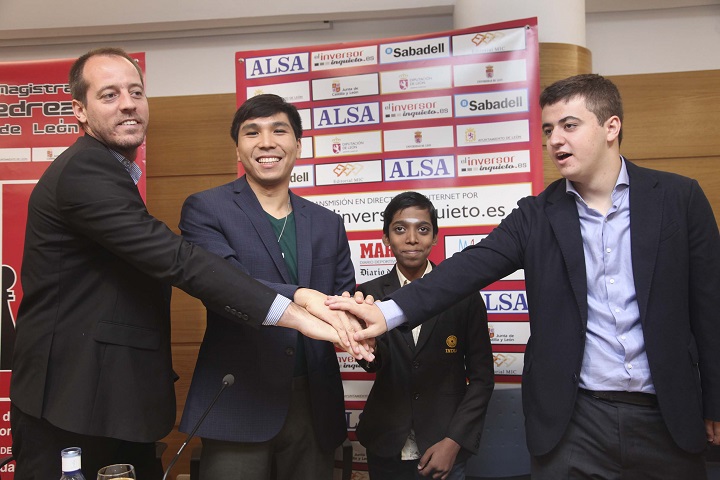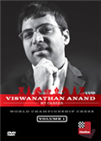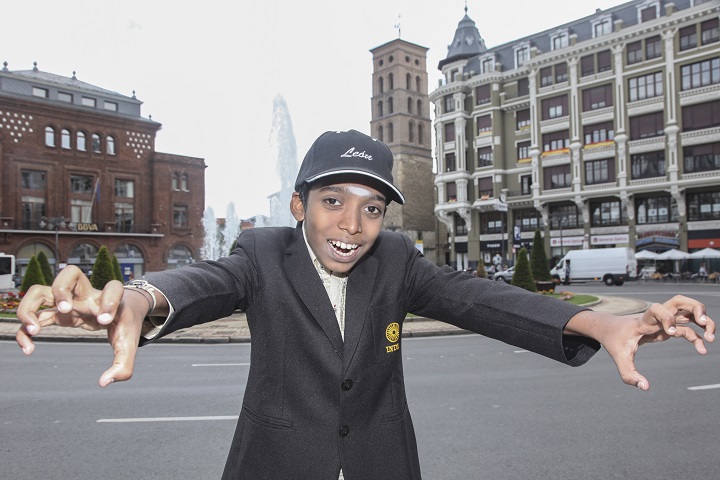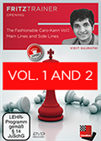A strong 1700 player
The Leon Masters tournament is one of the most original events in the circuit. This year they organized the 31st edition and put together an interesting field for the three-day affair. Wesley So comes right from winning both rapid sections of the first two Grand Chess Tour events; R. Praggnanandhaa just became the second youngest GM in the world; Paco Vallejo, Spain's strongest player, is returning strong after some years of unstable activity; and the local representative Jaime Santos was described by Vallejo as "the most talented young player in Spain".
The highest-rated participants, So and Vallejo, made a drawing of lots to see whom they would play against in the four-game rapid semi-final matches. Wesley was paired against Pragg, while Vallejo was paired against Santos. The first semi-final was played on Friday and the second one is coming on Saturday.

A unique tournament was about to begin | Photo: Official website
The first thing that stood out when the games started was Praggnanandhaa's rating. Since he has been busy playing classical tournaments to get his GM norms, he has not climbed the rating ladder in the rapid section. For someone who was not aware of the latest chess news, it looked like one of the strongest player in the world was facing a 12-year-old amateur.
By the time the opening phase of the first game had finished, it in fact looked like this was too much for the kid. So played a system with 1.d4 and 1.Nc3 that apparently took the Indian out of book quickly. The American had a strong initiative and — correctly — decided to give up a pawn to open things up on the kingside:
Wesley played 19.g5!, but after 19...Bxg5 he seemingly "forgot" to follow through with 20.dxe5, the logical continuation. Instead, he played 20.Qh5 and the position became double-edged after 20...e4. The tactical skirmish that followed left White with a rook against Black's pair of knights. Pragg had some difficulties to do it, but managed to coordinate his pieces. Soon things started to get messy as both players had very little time on their clocks. On move 52, the young Indian missed a huge chance:
 The first DVD with videos from Anand's chess career reflects the very beginning of that career and goes as far as 1999. It starts with his memories of how he first learned chess and shows his first great games (including those from the 1984 WCh for juniors). The high point of his early developmental phase was the winning of the 1987 WCh for juniors. After that, things continue in quick succession: the first victories over Kasparov, WCh candidate in both the FIDE and PCA cycles and the high point of the WCh match against Kasparov in 1995.
The first DVD with videos from Anand's chess career reflects the very beginning of that career and goes as far as 1999. It starts with his memories of how he first learned chess and shows his first great games (including those from the 1984 WCh for juniors). The high point of his early developmental phase was the winning of the 1987 WCh for juniors. After that, things continue in quick succession: the first victories over Kasparov, WCh candidate in both the FIDE and PCA cycles and the high point of the WCh match against Kasparov in 1995.
Running time: 3:48 hours
Black played 52...Kf6, when 52...Bf4 was decisive. The idea is to put the bishop on h6, blocking the rook from defending against the threat of promotion on h1. In fact, So allowed this tactic in the next move and Pragg missed it again. Ten moves later, however, Wesley blundered the same idea:
Here, White played 62.Kc6, but this time Praggnanandhaa found 62...Bg3. Resignation came two moves later. In the position of the diagram, it is necessary for White to play 62.Rxg2 and his passed pawns are enough to get a draw.
The 1700-player had defeated the winner of the two strongest rapid tournaments played this year, with Black!

Yet another Indian tiger is in town | Photo: Official website
It was clear that Wesley So was not in his best form, as he missed the kind of move that decides many club-level games in the second game.
Only seven moves have been played, and Black's last one was a big blunder, 7...Bg7. Here, White could have taken on f7 with the bishop. After the king captures the piece with 8...Kxf7, the knight comes in and wins the exchange by force (and destroys Black's piece coordination in the meantime): 9.Ng5+ Kg8 10.Ne6 Qe8 11.Nc7.
Pragg gave up a pawn later in the game, looking for an attack, but had to resign when he missed that his bishop was getting trapped:
 The Caro Kann is a very tricky opening. Black’s play is based on controlling and fighting for key light squares. It is a line which was very fashionable in late 90s and early 2000s due to the successes of greats like Karpov, Anand, Dreev etc. Recently due to strong engines lot of key developments have been made and some new lines have been introduced, while others have been refuted altogether. I have analyzed the new trends carefully and found some new ideas for Black.
The Caro Kann is a very tricky opening. Black’s play is based on controlling and fighting for key light squares. It is a line which was very fashionable in late 90s and early 2000s due to the successes of greats like Karpov, Anand, Dreev etc. Recently due to strong engines lot of key developments have been made and some new lines have been introduced, while others have been refuted altogether. I have analyzed the new trends carefully and found some new ideas for Black.
White's 34.Rg3 allowed 34...Rd8 and the bishop is lost. It was imperative to save the piece on the previous move with 24.Bg4.
This might sound like a fictitious story, but Praggnanandhaa was the one that had clear winning chances in the third game as well. He was not able to convert an advantageous rook and bishop against rook and knight position. Of course, So's defensive technique was first-class, as he has shown repeatedly in the past.
The match was tied and Pragg had White in the last game. By this time, things could have gone easily a different way — the kid could have had secured a 3:0 victory had he made the most of his positions! Here is when the experience factor kicked in, however. Wesley showed some confident play in a manoeuvring game and provoked his opponent to resign after 58 moves.
All games (annotated by IM Sagar Shah)
Studying the content of this DVD and adding these openings to your repertoire will provide players with a very strong tool to fight 1...e5 - as the practice of the author clearly demonstrates.
Wesley So will be waiting for the winner of the Saturday match. As he mentioned in the press conference, however, the result of the semi-final could have easily gone Pragg's way. For us, it is only intriguing to see what this kid will do next.
Update July 8th:
After the match, ChessBase India contacted Ramesh and asked him to share his impressions. This is what the coach had to say:
"The match was very important from various perspectives
1. His first match you can say!
2. First against a world class player like So
3. Coming immediately after getting his final GM norm without much rest or preparation time
4. Public expectation so high, curious to find out how he handles it
It was a tough match for both I would say. Wesley was obviously not in his best form. He made quite a few uncharacteristic mistakes in the match. Probably playing one so young had some impact. I believe in a couple of years, players will get used to Pragg and will play to their full strength.
Yes, Pragg had many winning chances, but we don't cry over spilled milk in general. No regrets whatsoever for the decisions taken. He is very responsible at such a tender age. When things go wrong they go wrong, when things go right they go right. He takes them both the same way. He does not let missed chances or games lost to affect him negatively. That is Pragg's main strength I would say."
Former World Champion (and Leon Champion) Viswanathan Anand also watched the games, and commented:
"I thought Praggnanandhaa showed very good form in this match playing someone like Wesley So, who is one of the highest rated rapid players in the world. He had good chances at some point. I think it’s very impressive. Of course, he will need to get more experience. That is what he will feel after this match but I was very impressed with his play and this is a very good beginning for him."
Links

























